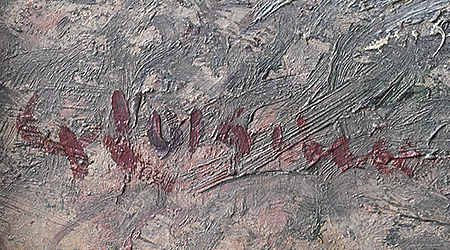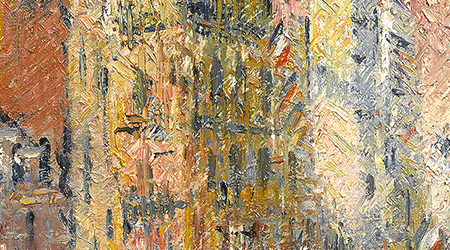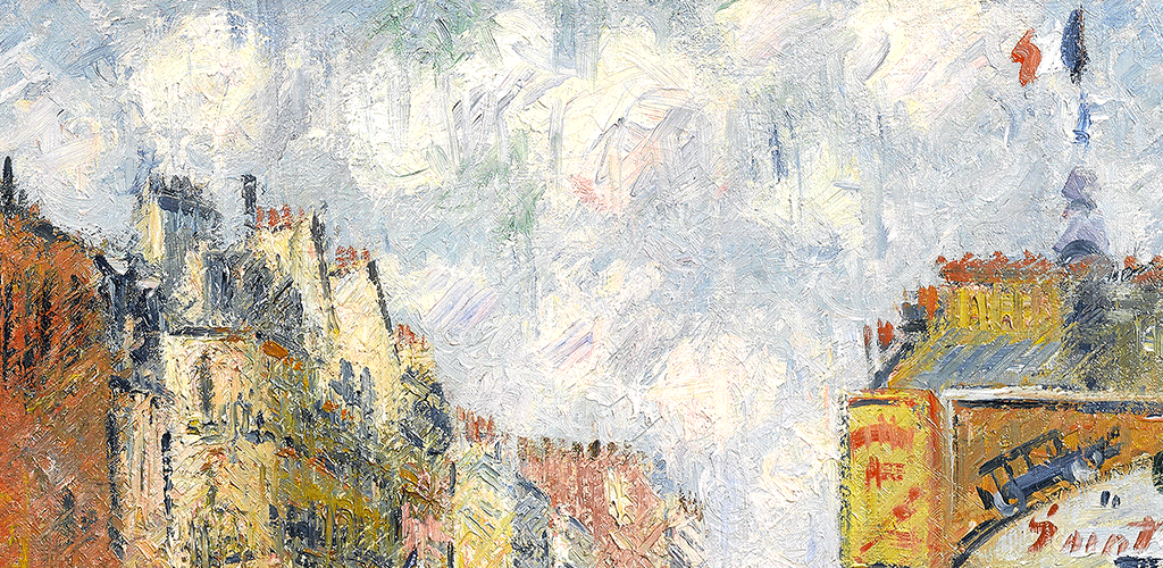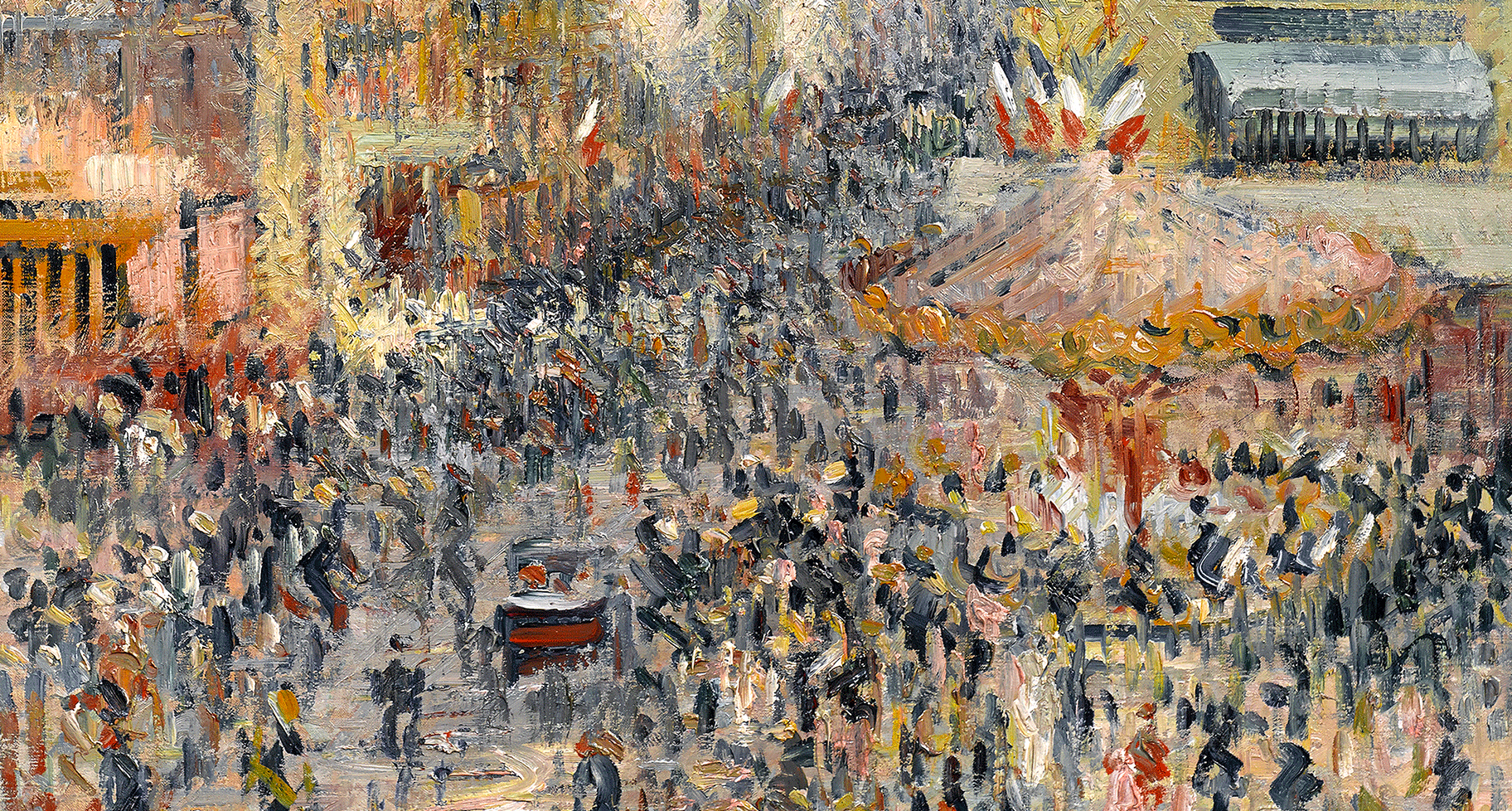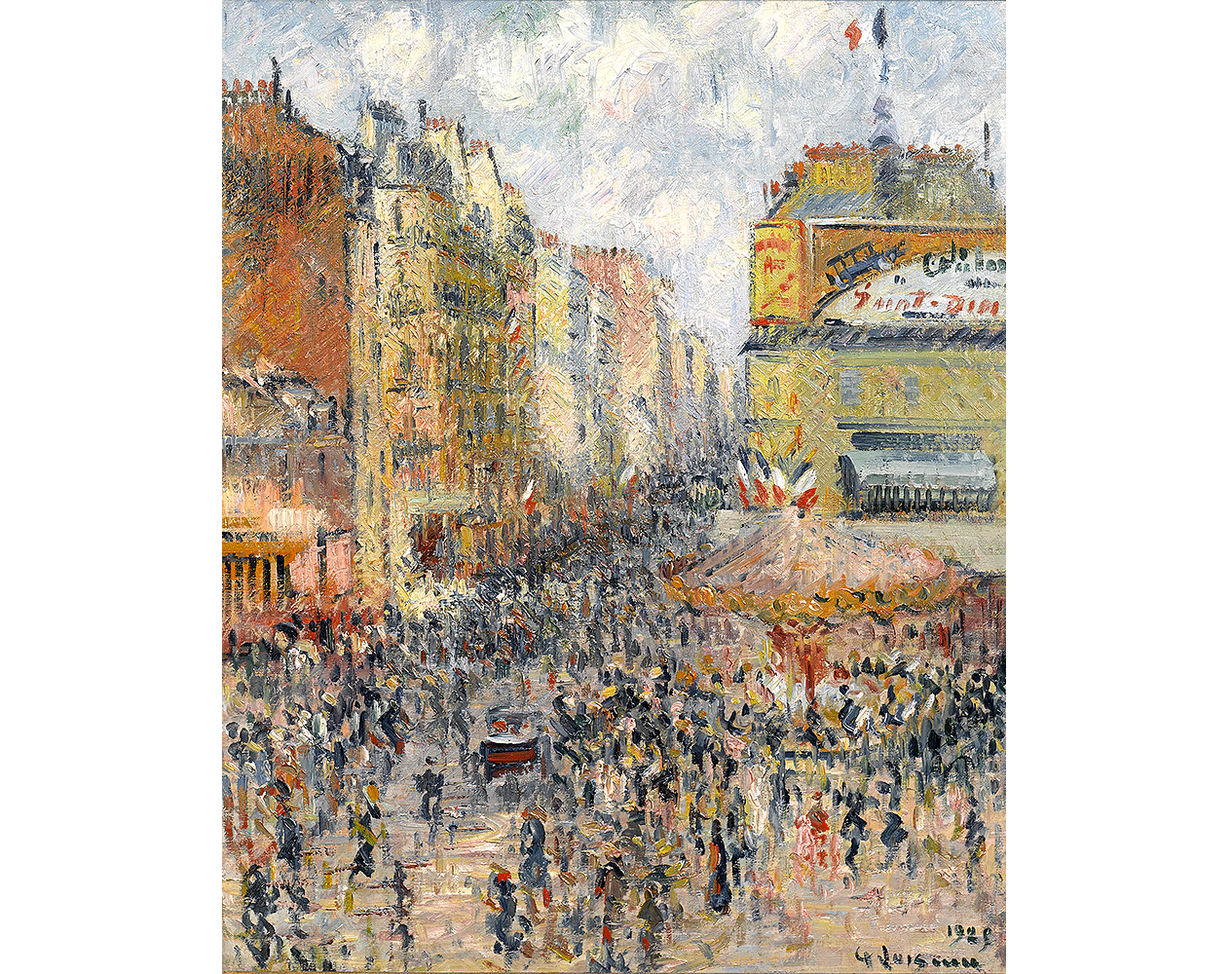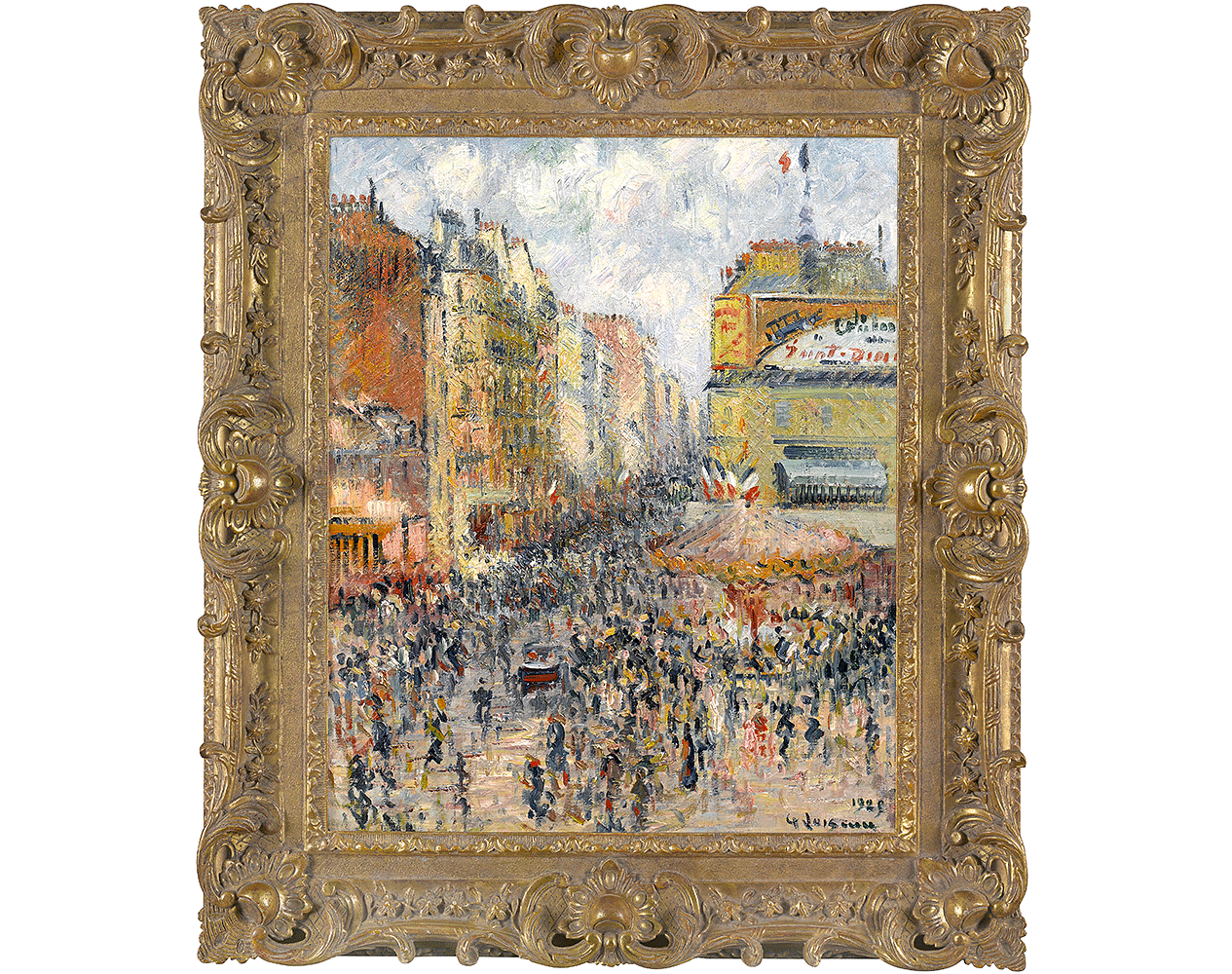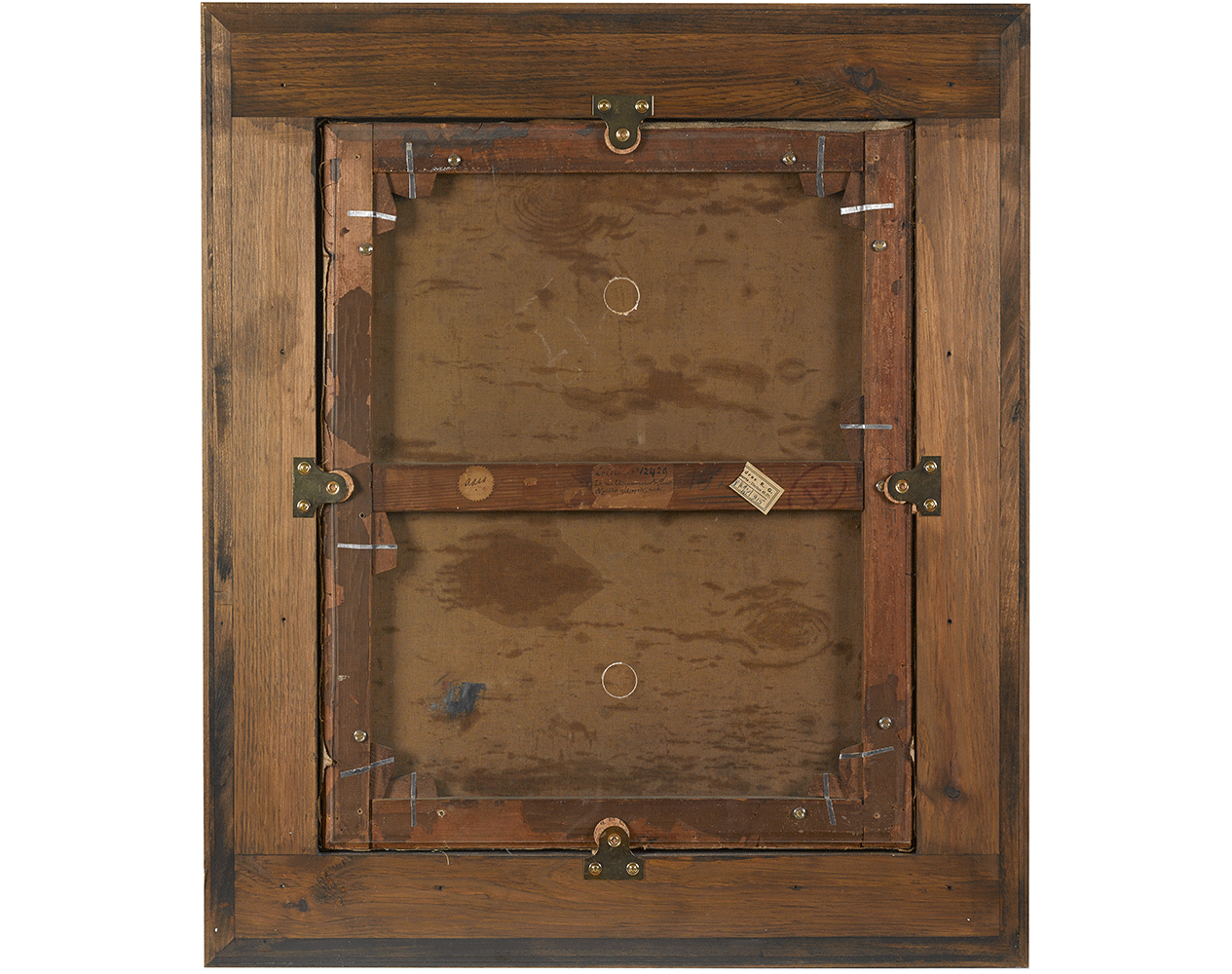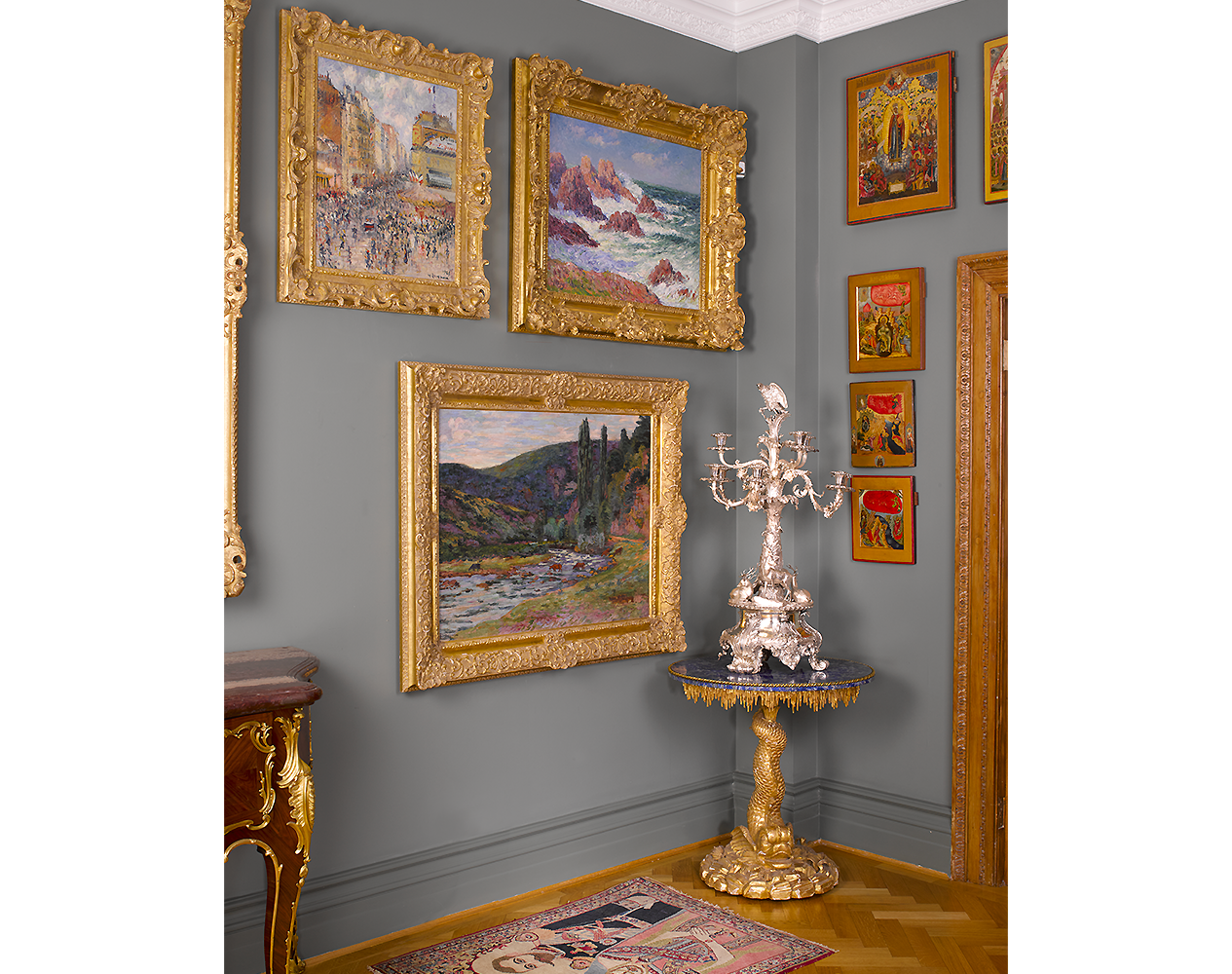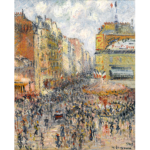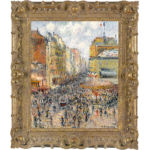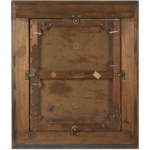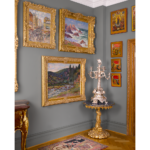Provenance
Galerie Jacques, Bailly, Paris (1966)
Mrs. Robert A. Magowan, San Francisco
Mr. Mark Magowan, New York (inherited from above)
Montgomery Gallery, San Francisco
Private Collection, Spain
This work will be included in the forthcoming catalogue raisonné being prepared by Didier Imbert.
Although celebrated as the lyrical painter of France’s rivers, Loiseau was also drawn throughout his career to the bustle of Paris, particularly to pulsating, bohemian Montmartre. The artist moved to Montmartre in 1887 when the inheritance from his grandmother enabled him to give up his job and devote his life to painting. He settled down at La Maison du Trappeur in the Rue Ravignan, later to be known as the Bateau-Lavoir. Loiseau was one of the first artists to occupy this house, which would later achieve international fame as the Bateau-Lavoir, where Picasso lived and worked in his early career.
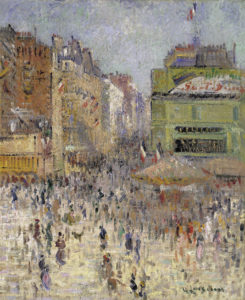
Rue Clignancourt, Paris, on 14th July, 1925, Museo Nacional Thyssen-Bornemisza, Madrid
Le Quatorze Juillet à Paris shows a place only a few steps away from there – the corner of the Rue Clignancourt and Boulevard Rochechouart was one of Loiseau’s favourite Parisian subjects. The work not only gives the precise record of the topography of the area; the slightly chaotic succession of building façades of different periods and styles, punctuated by chimneys and skylights, are immediately identifiable, but the lively and relaxed atmosphere of the streets of Montmartre is also portrayed. The energy of this artistic quarter is emphasised by the people crowding around the carousel, and by the cars and the brightly-coloured billboards. Loiseau conveys well the atmosphere of 14 July, a national holiday in France. Loiseau took up the subject of 14 July several times: the same year in Rue Clignancourt, Paris, on 14th July from Thyssen-Bornemisza Museum in Madrid, the following year, in 1926, in a version kept at the Dieppe museum, and in another one formerly in Alain Delon’s collection.
In these paintings the artist varies his brushwork, using staccato dabs for the moving figures, feathery hatching for distant buildings seen through a pearly haze, and circular touches for the scudding clouds. The bright yet subtle palette alternates squares of primrose and ochre with blue, green and purple, further evoking an atmosphere of Jazz Age syncopation within Loiseau’s Post-Impressionist technique. “I only acknowledge having one quality, that of being sincere. I work in my own little corner, as well as I can, and do my best to convey the impression I receive from nature… Only my instinct guides me, and I am proud I do not resemble anyone,” declared the artist.
Nevertheless, his views of Paris clearly recall the streets decorated with flags painted by Monet, such as Rue Montorgueil, Paris, Festival of June 30, 1878, as well as the series of views of Paris painted by Pissarro from a window, like those of the boulevard des Italiens and the boulevard Montmartre in 1897, or of the avenue de l’Opéra and of the place du Théâtre Français the following year. In a picture like this one, Loiseau shows an undeniable talent, but in 1925 art went through crucial changes which followed from the Impressionist revolution of 1874. Unperturbed, Loiseau continued to depict the Parisian landscape and its delicate light with a gentle brush, showing a sense of space, a vivacity in his touch and a feeling for silvery shades which reveals his unfailing loyalty towards his first masters, Monet, Pissarro and Sisley. With a feeling of nostalgia for the struggle of the New Painting which it had supported and encouraged, the Durand-Ruel gallery bought this painting and backed Loiseau’s art, as it had done fifty years before with the Impressionist pioneers.
